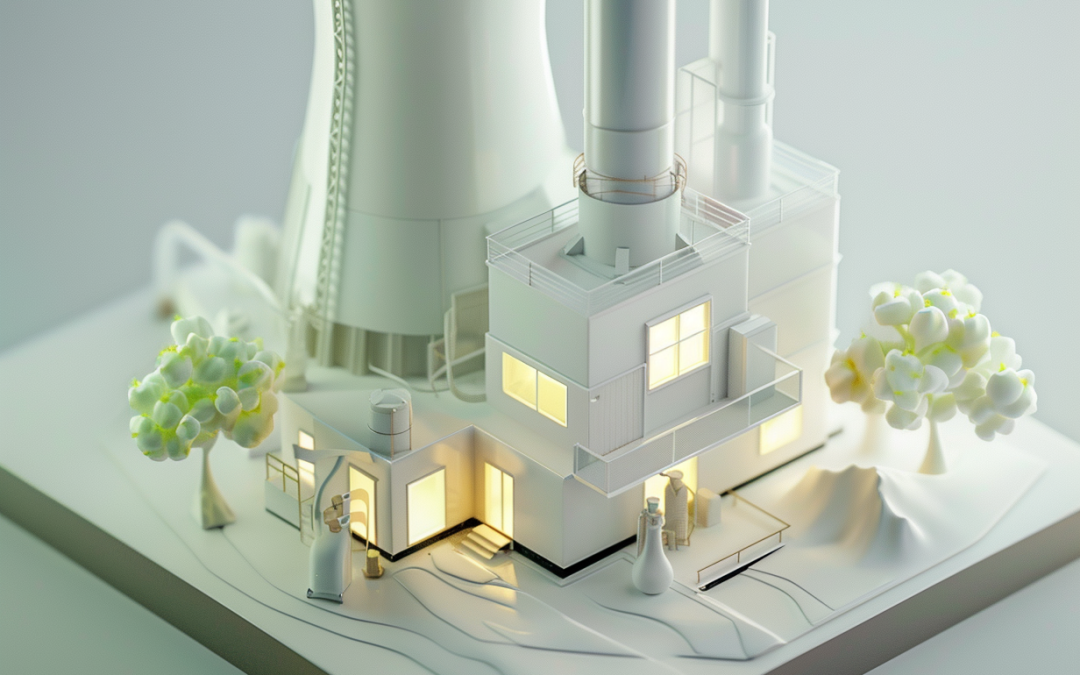The quest for clean, reliable, and sustainable energy sources has intensified in recent years. As we move away from fossil fuels, nuclear power has re-entered the conversation, but with a twist – small modular reactors (SMRs) designed for potential home use. This raises a crucial question: can safe home nuclear reactors become a viable energy solution for the future?
The Allure of Home Nuclear Reactors
The appeal of home nuclear reactors is multifaceted. Here are some key advantages:
- Clean Energy: Nuclear reactors generate electricity through nuclear fission, a process that splits atoms, releasing tremendous energy with minimal greenhouse gas emissions. Compared to fossil fuels, home nuclear reactors can significantly reduce a household’s carbon footprint.
- Energy Independence: Owning a home nuclear reactor offers the potential for energy independence from the traditional grid. This translates to freedom from fluctuating electricity prices and potential blackouts. Residents could become self-sufficient, generating their own power for heating, appliances, and even electric vehicles.
- High Energy Density: Nuclear reactors produce a vast amount of energy from a small amount of fuel. A single home reactor could potentially fulfill a household’s energy needs for years without refueling.
- Safety Advancements: Proponents of home nuclear reactors highlight advancements in safety technology. These reactors are designed to be smaller, simpler, and inherently safer than traditional reactors. They often incorporate passive safety features, relying on natural phenomena like gravity or air circulation to shut down in case of emergencies.
The Thorny Issues with Home Nuclear Reactors
Despite the positive aspects, several significant challenges remain:
- Safety Concerns: Nuclear power inherently carries safety risks. While proponents emphasize advancements, the public may harbor anxieties about potential accidents or radioactive leaks, even on a small scale. The potential consequences of a malfunction, however remote, could be devastating.
- Regulation and Oversight: Stringent regulations and rigorous oversight are crucial for home nuclear reactors. Existing regulatory frameworks may not be fully adapted to this new technology. Establishing robust safety standards, certification procedures, and ongoing inspections are essential.
- Waste Management: Nuclear waste remains radioactive for thousands of years. While home reactors may use fuel with lower radioactivity, the question of disposal remains. Creating a safe and secure long-term storage solution for spent nuclear fuel from numerous home reactors is a critical hurdle.
- Proliferation Risks: The potential for misuse of nuclear materials from home reactors is another concern. Robust security measures and international cooperation are necessary to prevent proliferation risks.
- Cost and Infrastructure: The development and deployment of home nuclear reactors would require significant technological advancements and infrastructure development. The initial cost for individual homeowners could be high, potentially limiting the technology’s accessibility.
Exploring the Technological Landscape
Several companies are currently developing SMRs for various applications. However, the concept of home nuclear reactors is still in its early stages. Here are a few examples:
- NuScale Power: This company is developing a 60 MW SMR design intended for utility applications. While not specifically designed for homes, the technology could be adapted in the future.
- GE Hitachi Nuclear Energy: Their BWRX-300 SMR design offers a 300 MW capacity, again targeting utility-scale applications. However, the advancements and safety features incorporated in these larger designs could inform the development of smaller home reactors.
- Tesla: Elon Musk has expressed interest in developing small, safe nuclear reactors, highlighting potential synergies with Tesla’s battery technology. However, these remain conceptual ideas without concrete details.
Public Perception and the Social Dimension
Public perception of nuclear energy plays a critical role. Public trust and acceptance are necessary for the widespread adoption of home nuclear reactors. Addressing concerns about safety and waste disposal is crucial. Open communication, transparent information sharing, and engaging the public in discussions will be essential.
The Ethical Considerations
The ethical implications of home nuclear technology must be carefully considered. Issues such as potential environmental damage, long-term waste management, and equitable access to this technology need to be addressed. Ensuring responsible development and deployment is paramount.
The Road Ahead: A Cautious Approach
Home nuclear reactors are a fascinating concept with the potential to revolutionize energy production. However, significant technological advancements, robust regulatory frameworks, and a shift in public perception are required before they become a viable energy solution.
Potential Pathways for Progress
- Research and Development: Continued research and development are crucial to ensure the safety, efficiency, and affordability of home nuclear reactors. Advancements in materials science, reactor design, and waste management are essential.
- Pilot Programs: Implementing pilot programs in controlled environments could provide valuable data on the feasibility and safety of home nuclear reactors. These programs could help refine the technology and inform future regulatory frameworks.
- Public Education: Raising public awareness about the advancements in nuclear technology, addressing
